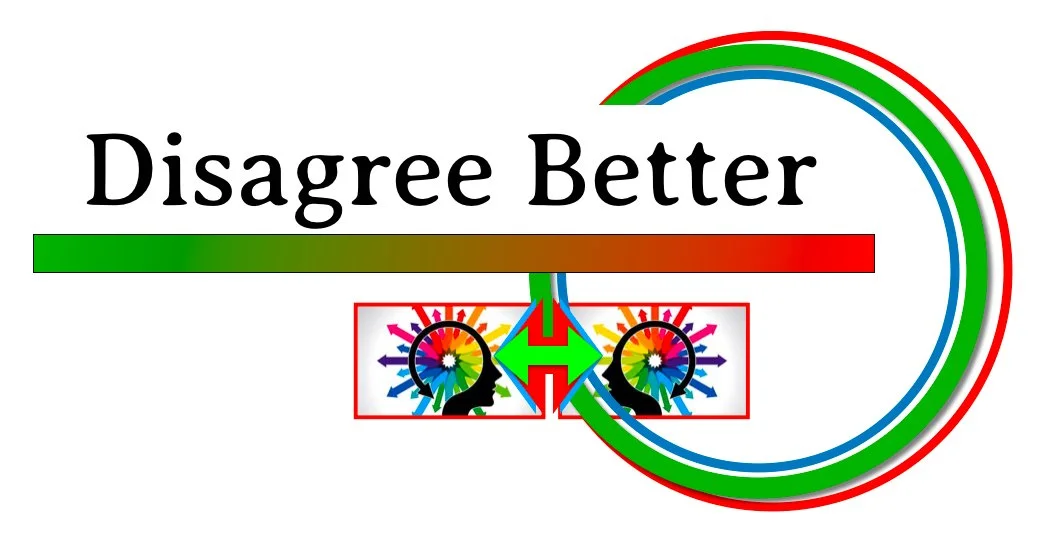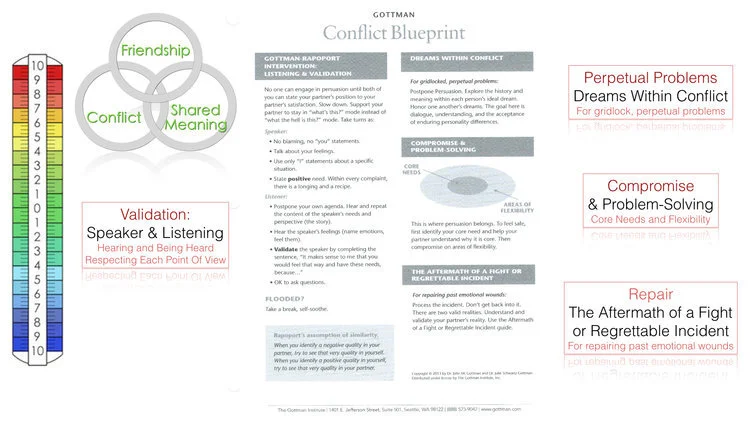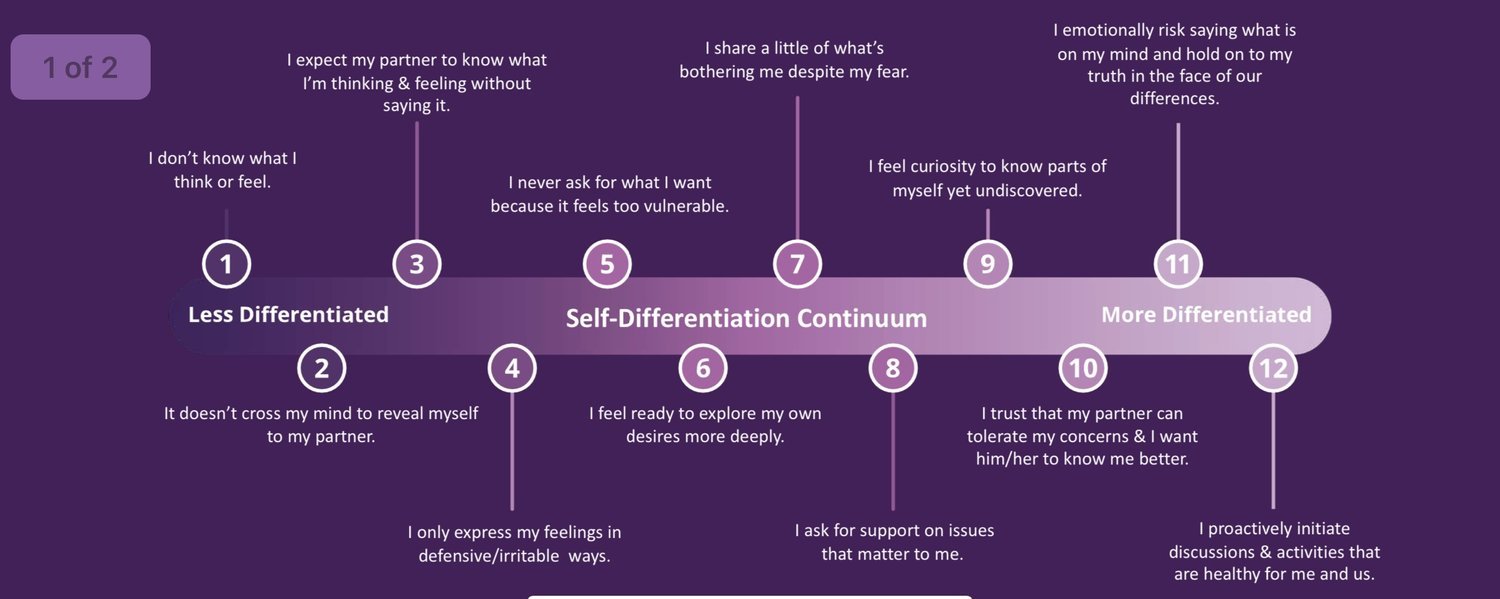10 Examples of Validating Emotions vs. Dismissing
These examples are grounded in research from John and Julie Gottman, Ellyn Bader, Sue Johnson, David Schnarch, Murry Bowen, Stan Tatkin, and Esther Perel, showcasing how validating emotions can strengthen connection, while dismissing them can damage trust and intimacy.
1. Feeling Hurt About a Forgotten Event
Done Badly:
“Oh, stop making such a big deal out of it. I just forgot—it’s not the end of the world.”
Why It Fails: Dismissing the partner’s feelings invalidates their emotional experience, leading to frustration and disconnection.
Impact: Partner feels unimportant, unheard, and resentful.
Done Well:
“I can see why that hurt you—it was important to you, and I didn’t follow through. I’m really sorry for that.”
Why It Works: Acknowledges the partner’s emotional reality, showing empathy and accountability.
Impact: Creates understanding and emotional safety, fostering repair.
Quick Repair:
“I realize I brushed off your feelings earlier. That wasn’t fair—I want to hear more about how this affected you.”
2. Expressing Overwhelm About Chores
Done Badly:
“You’re overreacting—it’s just a little mess. Why are you so upset?”
Why It Fails: Minimizing the partner’s feelings invalidates their experience, making them feel misunderstood.
Impact: Increases emotional distance and defensiveness.
Done Well:
“I can tell this is really stressing you out. Let’s talk about how we can handle it together.”
Why It Works: Acknowledges the partner’s feelings and offers support, fostering collaboration.
Impact: Promotes teamwork and emotional connection.
Quick Repair:
“I shouldn’t have dismissed your stress earlier. I can see this is important to you—let’s revisit it.”
3. Feeling Rejected in Intimacy
Done Badly:
“Why are you so sensitive? It’s not like I said no on purpose.”
Why It Fails: Dismissing the partner’s feelings of rejection minimizes their emotional pain, deepening the disconnection.
Impact: Reduces intimacy and increases feelings of rejection.
Done Well:
“I didn’t realize how that made you feel. I’m sorry you felt hurt—I want to understand more about what you’re feeling.”
Why It Works: Validates the partner’s emotional response, inviting deeper understanding.
Impact: Strengthens emotional and physical intimacy through empathy.
Quick Repair:
“I’m sorry I dismissed your feelings earlier. I want to understand how this affected you.”
4. Discussing Parenting Conflicts
Done Badly:
“You’re being too emotional about this. It’s not that serious.”
Why It Fails: Invalidates the partner’s concerns and assumes they’re overreacting.
Impact: Undermines trust and weakens the parenting partnership.
Done Well:
“I see you’re really passionate about this—it’s clear you care deeply about the kids. Let’s talk about what’s worrying you.”
Why It Works: Recognizes the partner’s concern and care, encouraging collaboration.
Impact: Builds trust and strengthens teamwork as co-parents.
Quick Repair:
“I realize I downplayed your concerns. I respect how much you care, and I want to listen.”
5. Feeling Disconnected
Done Badly:
“You’re overthinking it—nothing is wrong.”
Why It Fails: Minimizes the partner’s experience, making them feel dismissed and unsupported.
Impact: Amplifies feelings of disconnection and emotional isolation.
Done Well:
“It sounds like you’re feeling disconnected from me. I want to work on this with you—what can we do to feel closer?”
Why It Works: Acknowledges the partner’s feelings and takes responsibility for the connection.
Impact: Restores closeness and fosters a sense of teamwork.
Quick Repair:
“I shouldn’t have brushed off your feelings earlier. Let’s talk about how you’re feeling.”
6. Stress About Finances
Done Badly:
“Why are you freaking out? We’ll figure it out—it’s not a big deal.”
Why It Fails: Dismissing financial stress disregards the partner’s legitimate concerns and creates frustration.
Impact: Increases anxiety and reduces trust in problem-solving as a team.
Done Well:
“I can see how this is weighing on you. Let’s sit down together and figure out a plan.”
Why It Works: Validates the stress and offers a proactive approach to problem-solving.
Impact: Reduces financial anxiety and fosters a sense of partnership.
Quick Repair:
“I’m sorry I downplayed your stress earlier. I want to understand what’s worrying you and figure this out together.”
7. Feeling Unsupported During Conflict
Done Badly:
“You’re being dramatic—it’s not that serious.”
Why It Fails: Labels the partner’s emotions as over-the-top, invalidating their experience.
Impact: Leads to emotional withdrawal and a sense of being alone in the relationship.
Done Well:
“I can see this is really upsetting for you. I want to understand what’s going on and how I can support you.”
Why It Works: Acknowledges the partner’s emotional reality, inviting connection.
Impact: Strengthens trust and emotional safety.
Quick Repair:
“I regret calling you dramatic—that wasn’t fair. I want to hear how you’re feeling.”
8. Reacting to Criticism About Time Management
Done Badly:
“You’re making a big deal out of nothing. Just relax!”
Why It Fails: Dismissing the partner’s criticism invalidates their feelings and discourages constructive dialogue.
Impact: Escalates the conflict and reduces collaboration.
Done Well:
“I can see why you’re upset—I didn’t manage my time well, and it affected you. Let’s figure out how I can do better.”
Why It Works: Validates the partner’s frustration and takes responsibility, fostering resolution.
Impact: Encourages teamwork and strengthens accountability.
Quick Repair:
“I’m sorry I dismissed your concerns earlier. I want to take this seriously and work on it with you.”
9. Feeling Neglected
Done Badly:
“You’re always so needy—I can’t be everything for you.”
Why It Fails: Frames the partner’s emotional needs as a flaw, leading to shame and rejection.
Impact: Increases emotional distance and insecurity.
Done Well:
“It sounds like you’re feeling neglected—I want to be there for you. Let’s talk about how we can spend more time together.”
Why It Works: Validates the partner’s needs and invites solutions without judgment.
Impact: Strengthens emotional connection and reduces feelings of neglect.
Quick Repair:
“I regret calling you needy. I didn’t mean to dismiss your feelings—I care about your needs.”
10. Concerns About Work-Life Balance
Done Badly:
“You’re overreacting—I’m working hard for us, so why are you complaining?”
Why It Fails: Dismisses the partner’s feelings, framing their concerns as invalid or ungrateful.
Impact: Creates defensiveness and emotional disconnection.
Done Well:
“I hear that you’re feeling frustrated about how much I’m working. Let’s talk about how we can create more balance.”
Why It Works: Acknowledges the partner’s emotions and demonstrates a willingness to address their concerns.
Impact: Builds mutual understanding and fosters collaboration on balancing priorities.
Quick Repair:
“I’m sorry for dismissing your concerns earlier. I want to understand what you’re feeling and work on this together.”
Summary of Impact
Validating emotions creates a foundation of emotional safety, understanding, and trust. Dismissing emotions, on the other hand, undermines connection, increases defensiveness, and can damage the relationship over time. Quick repairs are essential to rebuild trust and ensure that dismissive behavior doesn’t take root in the relationship dynamic.
———
Don Elium, MFT 925 256-8282 Text/Phone in Northern and Southern California
















































